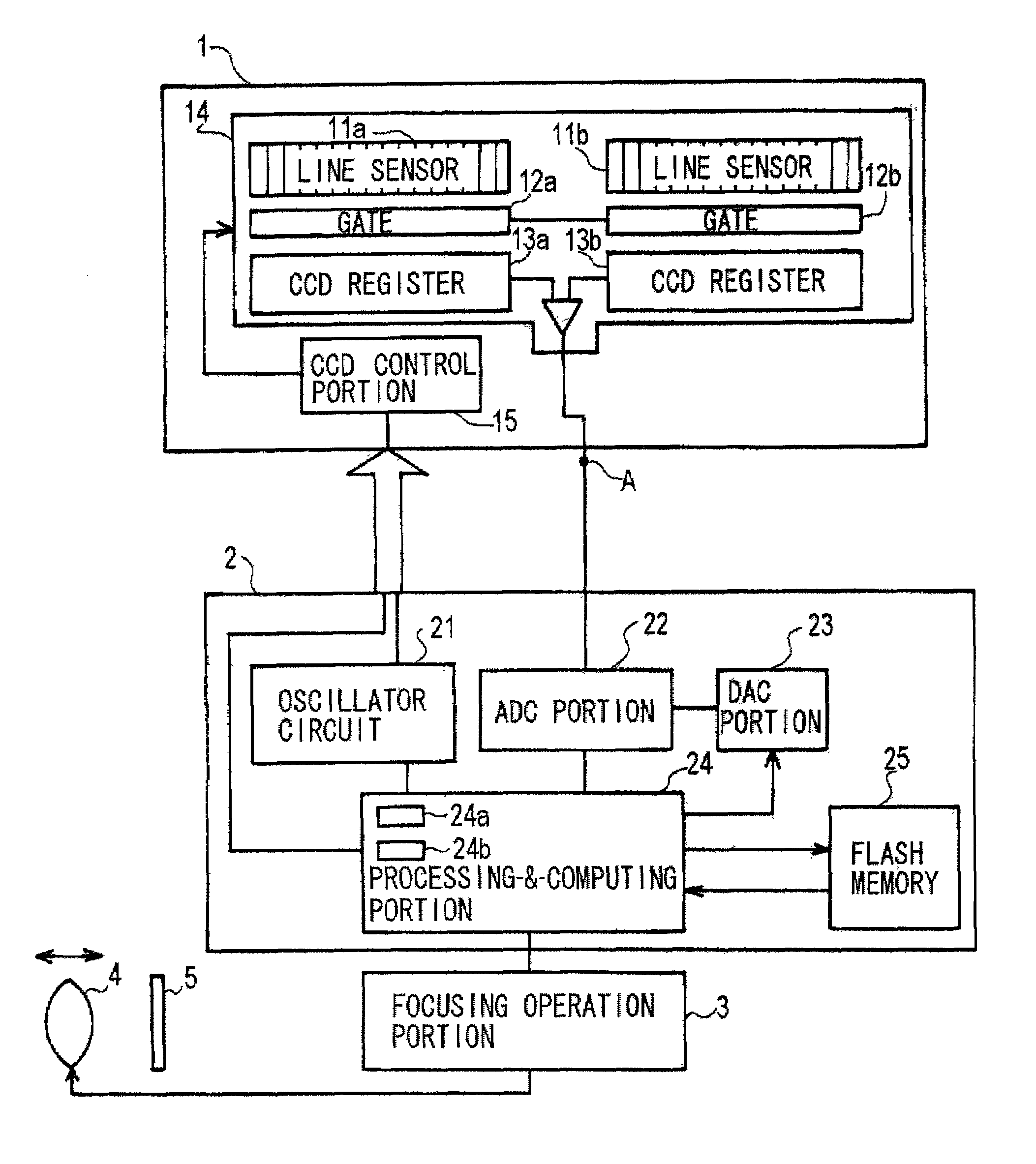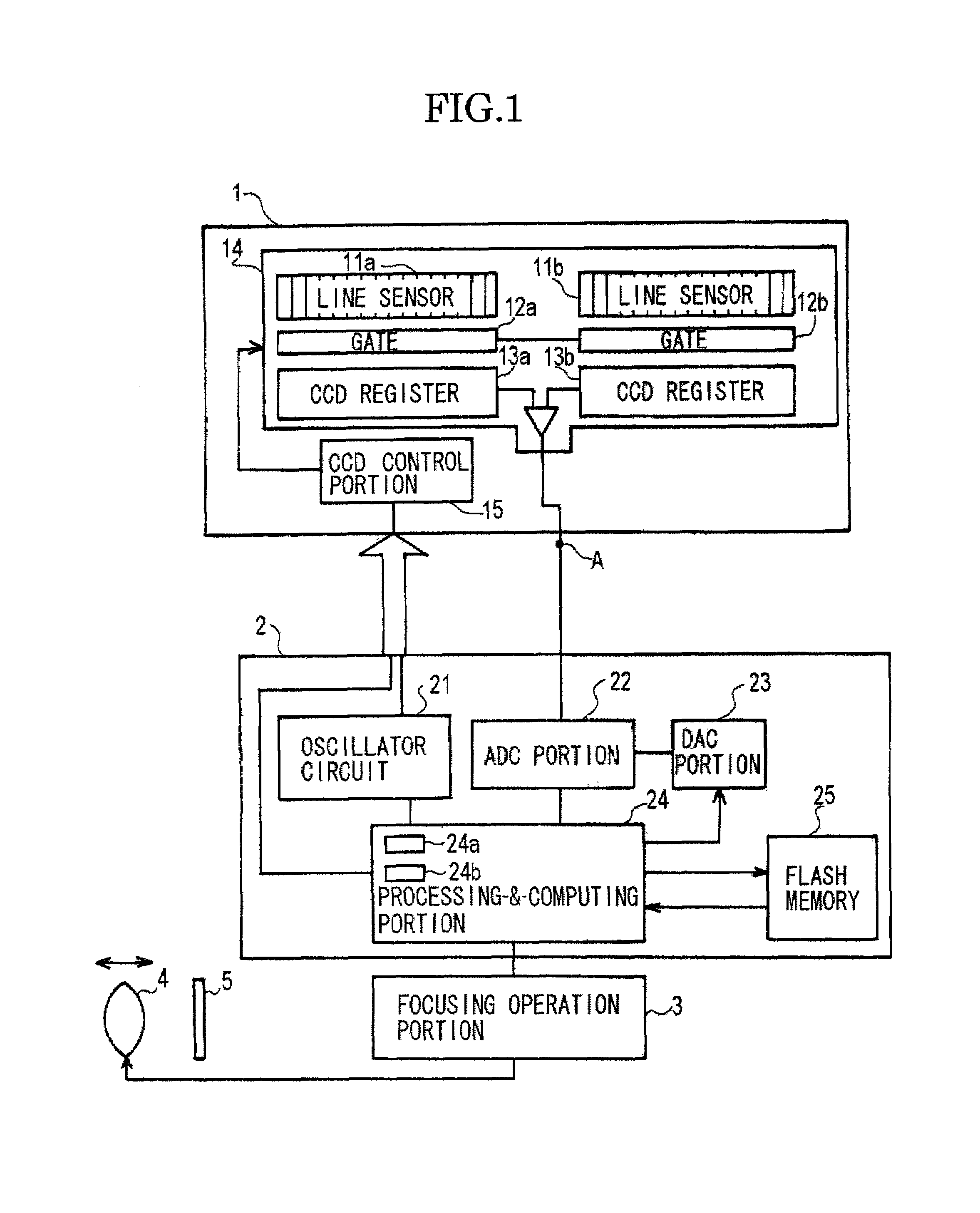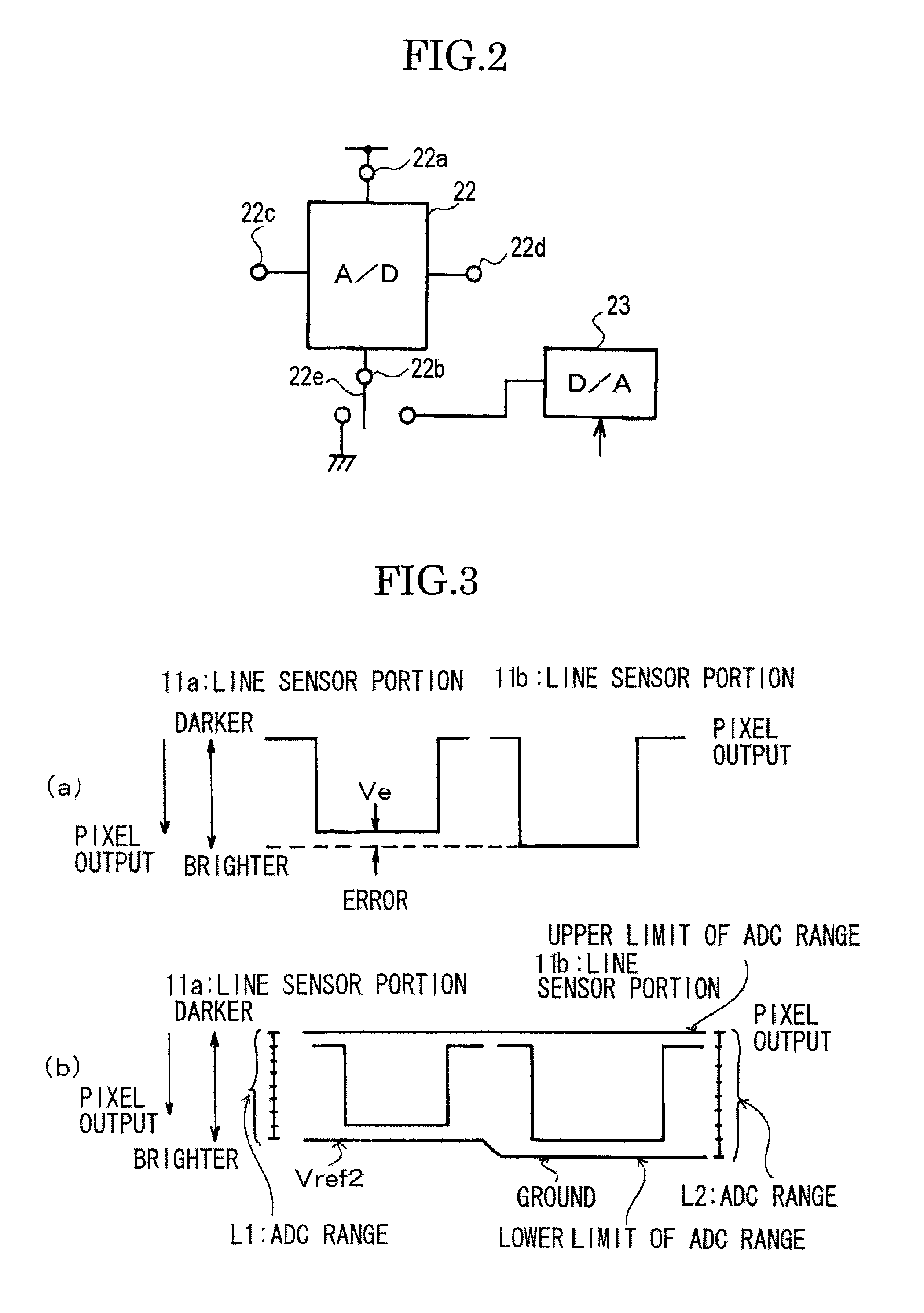Image signal output method, image signal output device, rangefinder, and imaging device
a technology of image signal and output method, which is applied in the direction of printers, distance measurement, camera focusing arrangement, etc., can solve the problems of deteriorating rangefinding accuracy, unable to make appropriate corrections for normal sensor arrays producing outputs whose difference increases with increasing incident light amount, and the difference between outputs increases with increasing amount. , to achieve the effect of improving rangefinding accuracy, enhancing imaging accuracy, and improving focusing accuracy
- Summary
- Abstract
- Description
- Claims
- Application Information
AI Technical Summary
Benefits of technology
Problems solved by technology
Method used
Image
Examples
Embodiment Construction
[0022]Embodiments of the present invention are hereinafter described with reference to the accompanying drawings.
[0023]In FIG. 1, a CCD module 1 includes a CCD solid-state imaging device 14 and a CCD control portion 15 for controlling the operation of the imaging device 14. This imaging device 14 is fitted with a pair of photoelectric converter line sensor portions 1a, 11b, gateportions 12a, 12b, and CCD shift registers 13a, 13b.
[0024]The photoelectric converter line sensor portions (hereinafter referred to as the line sensor portions) 11a and 11b acting as sensor arrays are charge-accumulating light-sensitive elements, and each sensor portion has a plurality of pixels (light-sensitive cells). An image of a subject that is an object under measurement is focused onto the line sensor portions by a focusing optical system (not shown) such as lenses different from a photography lens, and these line sensor portions produce electric charge corresponding to the focused image.
[0025]The ope...
PUM
 Login to View More
Login to View More Abstract
Description
Claims
Application Information
 Login to View More
Login to View More - R&D
- Intellectual Property
- Life Sciences
- Materials
- Tech Scout
- Unparalleled Data Quality
- Higher Quality Content
- 60% Fewer Hallucinations
Browse by: Latest US Patents, China's latest patents, Technical Efficacy Thesaurus, Application Domain, Technology Topic, Popular Technical Reports.
© 2025 PatSnap. All rights reserved.Legal|Privacy policy|Modern Slavery Act Transparency Statement|Sitemap|About US| Contact US: help@patsnap.com



